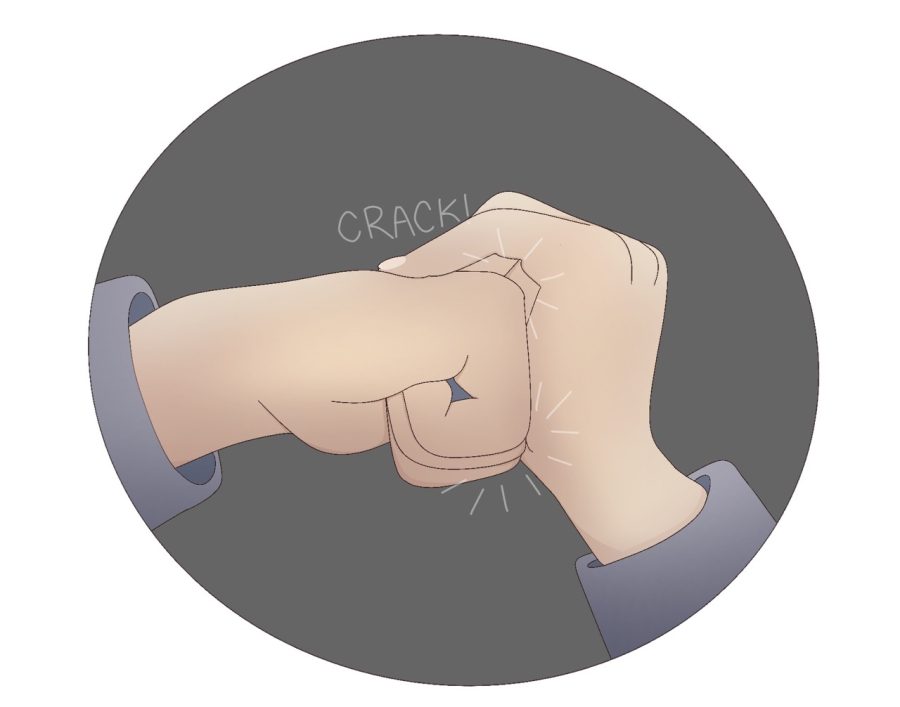Cracking Joints a Harmless Habit or Dangerous Practice?
April 22, 2022
At some point during class, more often than not, you may be greeted with a cacophony of clicks and cracks. Students, looking for something to do recreationally, crack their knuckles or stretch over the school chairs to hear satisfying pops. Cracking joints is commonplace both inside and outside schools, but has anyone ever stopped to consider if the entertaining hobby is secretly a ticking time bomb for future health problems?
Why do people crack their joints in the first place? Turns out, there are a multitude of answers. According to Healthline, reasons include the cracking sensation and accompanying noise, a reaction to stress, or just a way to keep hands busy in a nervous situation (healthline.com). That well-known noise has many names and many explanations. In the Journal of Osteopathic Medicine, “The sound generated by joint manipulation has been classified variously throughout osteopathic medical literature, being referred to as an ‘articular crack,’ ‘articular pop,’ ‘clunk,’ ‘crepitus,’ ‘joint click,’ ‘snap,’ ‘synovial grind,’ and ‘thud,’ and it has been described as a ‘grating’ sound in the general medical literature” (degruyter.com). The Library of Congress said in an article that escaping gasses in joints and readjusting tendons are to blame (loc.gov).
Over time, worries about cracking joints have turned into public “knowledge.” One of the most popular beliefs is that cracking knuckles will lead to arthritis later in life. According to the National Library of Medicine, “A survey of a geriatric patient population with a history of knuckle cracking failed to show a correlation between knuckle cracking and degenerative changes of the metacarpal phalangeal joints” (ncbi.nlm.nih.gov). In simpler terms, it’s been disproven. Reporter Neil Tuttle, who writes for the Australian Broadcasting Corporation, said, “American doctor Donald Unger famously cracked knuckles only on one hand for over 50 years, and found no sign of increased arthritis compared to the other hand” (abc.net.au). While this is definitely a relief to habitual hand-crackers, there are still boundaries that shouldn’t be crossed.
Some parts of the body are undoubtedly dangerous to be repetitively cracked, given the majority of people aren’t licensed chiropractors. According to UC High Nurse Jennifer Lasser, “Cracking your back is different. It can misalign your spine; it can affect the muscles in your spine alignment. Cracking backs isn’t the same as cracking knuckles.”
There are other parts of the body that shouldn’t be repetitively stressed. According to the Henry County Hospital, “Your metacarpophalangeal joints are the knuckles where your fingers meet the rest of your hand. Although these joints are very stable, it is still possible to dislocate these joints when enough external pressure is applied” (henrycountyhospital.org). Moderation seems to be the key to keeping joints undamaged.
For now, it appears as though cracking is neither good nor bad. Tuttle said, “Although it may irritate friends and family, self-manipulating [cracking] our joints is probably neither useful nor harmful for the individual” (abc.net.au). Even so, people should do so sparingly; the last thing anyone would want to do is accidentally go too far and injure oneself.


